Archive Assistant Neil Wiffen takes a look at how peas became so ubiquitous on the dinner tables of the nation.
Frozen peas must be the most accessible vegetable known to 21st century shoppers – such an easy convenience food to reach for all year round. Peas throughout history have been an important food source, and catalogue entries from Essex Archives Online are littered with references to them. During the middle-ages and early modern period they were grown as field crops for drying and use over winter, as an easily stored, high protein food source. Historians believe that ‘garden’ peas for eating freshly picked were an introduction from the Low Countries in the seventeenth century (T. Musgrave, Heritage Fruits & Vegetables (London, 2012), p.106). The kitchen gardens of the large country house would have produced them for the table along with market gardeners operating around towns, and it is quite probable that general gardeners, from a fairly early date, would have also done so once seed became readily available.
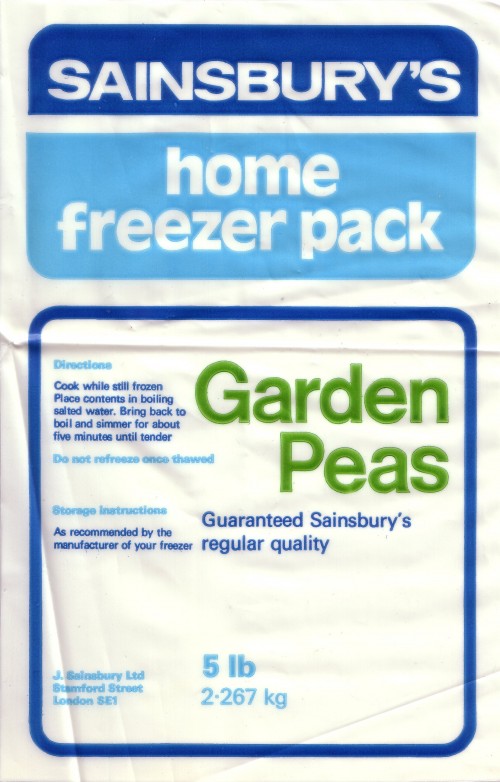
(With thanks to our friends at the Sainsbury’s Archive (www.sainsburyarchive.org.uk/). © The Sainsbury Archive, Museum of London Docklands, 2020, SA/PKC/PRO/1/10/2/4/6/7)
Through the nineteenth century the consumption of fresh(ish) peas increased, and the expansion of the railway network allowed Essex producers to send vast quantities of all sorts of fresh produce up to London – by 1850 3,900 tons of peas from surrounding counties were sold through the markets there (G. Dodds, The Food of London (London, 1856), p.387). And how were many of these peas harvested in a pre-mechanised age? Well, school log books of the period are littered with references to pupils being absent for all sorts of harvest work, not least that of pea picking, probably there alongside their mothers. The income that families made from seasonal work was not to be underestimated, and full advantage was made of these opportunities.
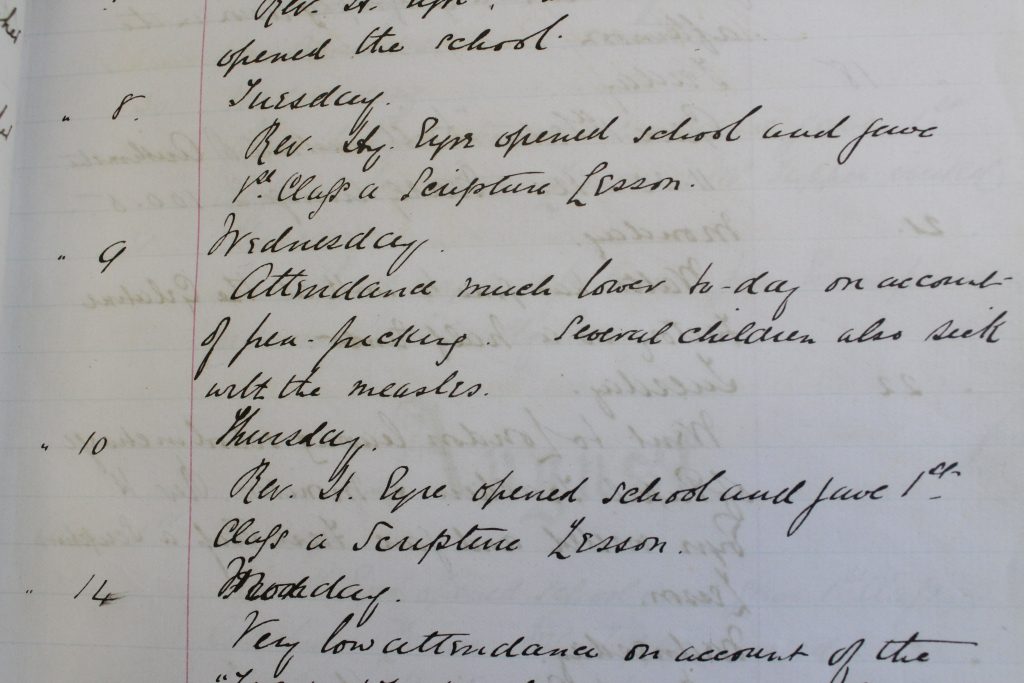
And it was not just women and children who helped bring in the peas. Many itinerant workers also relied on various crops, and growers were glad of the extra labour to bring in the harvest. David Smith, farmer, author and broadcaster of Broomfield, wrote of the ‘grey tattered figures of all types and ages [as] they trudged along slowly in the bright June sunlight … They would come, every year … just as they came to thousands of other farms … And so to Hill Farm, with near it the brilliant green of two to three fields of picking peas … for a fickle London market.’ (D. Smith, The Same Sky Over All (London, 1948)*, p.116).
As to quite how ‘fresh’ hand-picked peas were in the nineteenth and twentieth centuries, it is debatable. It wasn’t until freezing was first developed in the 1920s that the possibility of something akin to freshly picked peas became available to most consumers. However, without the advent of retailers with frozen sections and domestic home freezers, frozen peas eaten widely would have to wait until well into the second half of the twentieth century. In the meantime, and as with most vegetables, peas would have probably been well boiled!
If you wanted to eat peas fresh from the garden then, as indicated above, you had to grow them, and it is the same today. The joy of podding peas is one of the highlights of summer – so much so that sometimes more end up being eaten before they even make it to the cook! There are lots of varieties to choose from, not least the well known and locally raised Kelvedon Wonder which harks back to the 1920s. An older variety is Ne Plus Ultra from the early nineteenth century. Perhaps you know it from the BBC television series The Victorian Kitchen Garden (1987)* when Harry Dodson and Peter Thoday resurrected the variety from some very old seed. It was alleged to reach 7 foot in height, which is probably why it waned in popularity – modern varieties are generally all dwarfing which is an advantage to growers.
There used to be many more pea varieties grown in the past, partly because there would have been regional varieties that were only available locally, but also because of the proliferation of seed companies – something which, as with many businesses, has reduced over the last 50 years or so. If we take Chelmsford based Cramphorns, they listed 15 varieties of just the second early and maincrop varieties, including Ne Plus Ultra, in their 1898 catalogue. Along with the early sorts of peas, growing a lot of different varieties meant that if one failed there were others to come along and, in a pre-refrigeration era, it extended the length of the season in which to enjoy fresh peas.
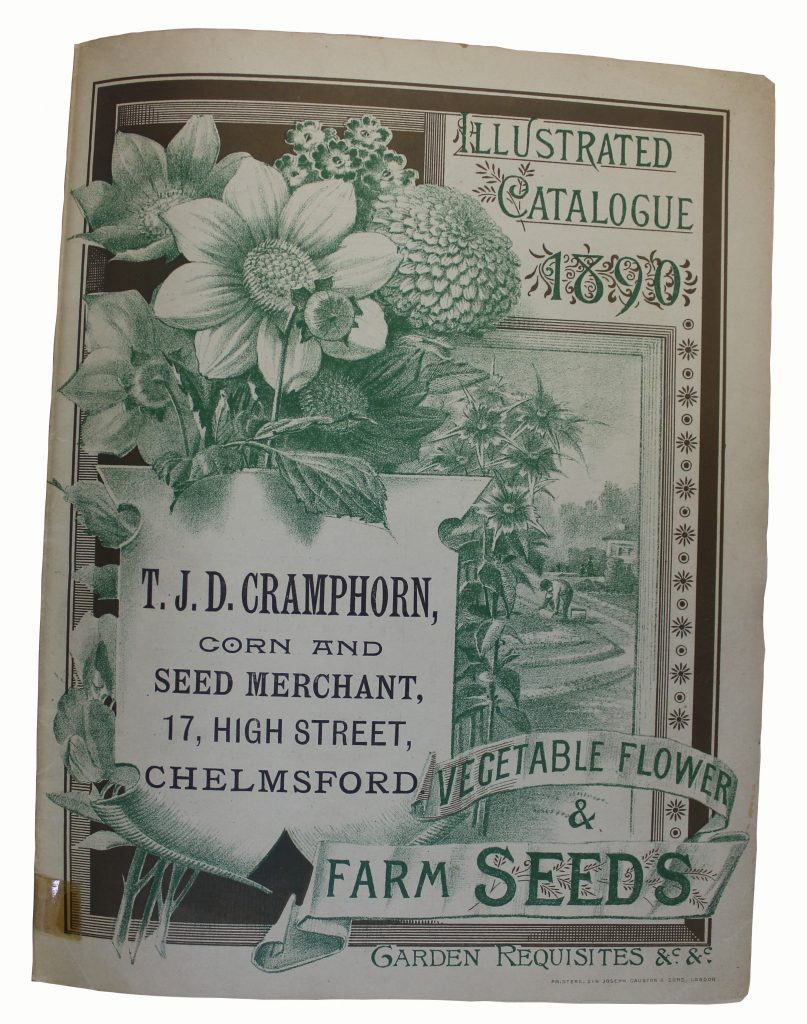
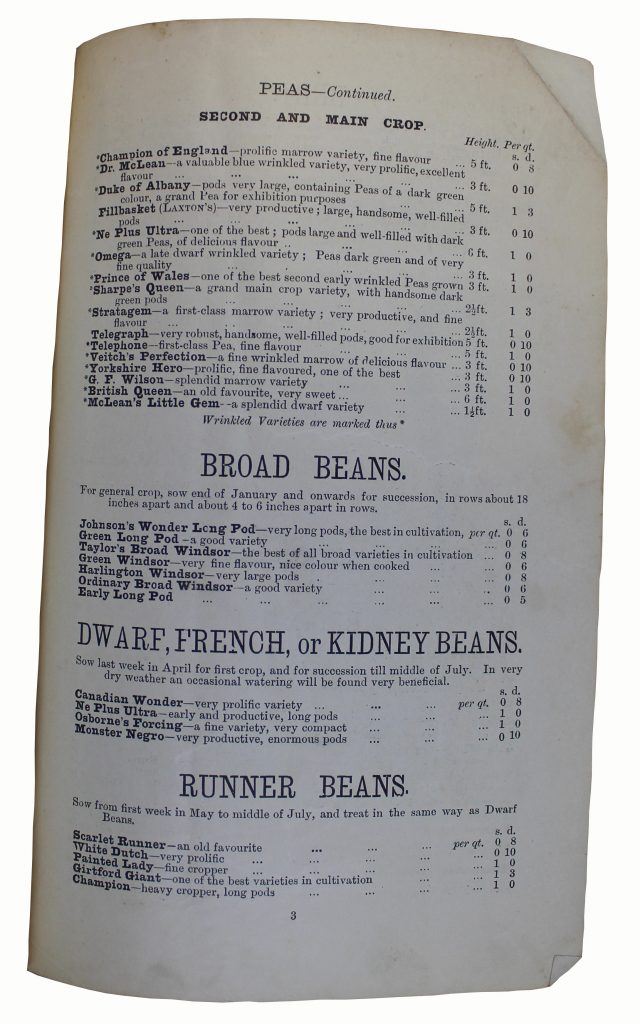
So as it is the time of year to start sowing peas I thought it might be fun to have a go at growing some Ne Plus Ultra peas – just as past gardeners in Essex would have done. I have also so challenged some colleagues and friends of the ERO to grow some to see if any of us can get them to 7 foot – all for a bit of fun I hasten to add. I’ll grow some Kelvedon Wonder as well by comparison and, weather and pests being kind, I’ll update you on how we’re all getting along as well as ruminating on other points of gardening that ‘crop’ up over the summer. For the moment though, keep your fingers crossed for a spell of dry weather as I’ll need to get on in the garden to prepare the soil.
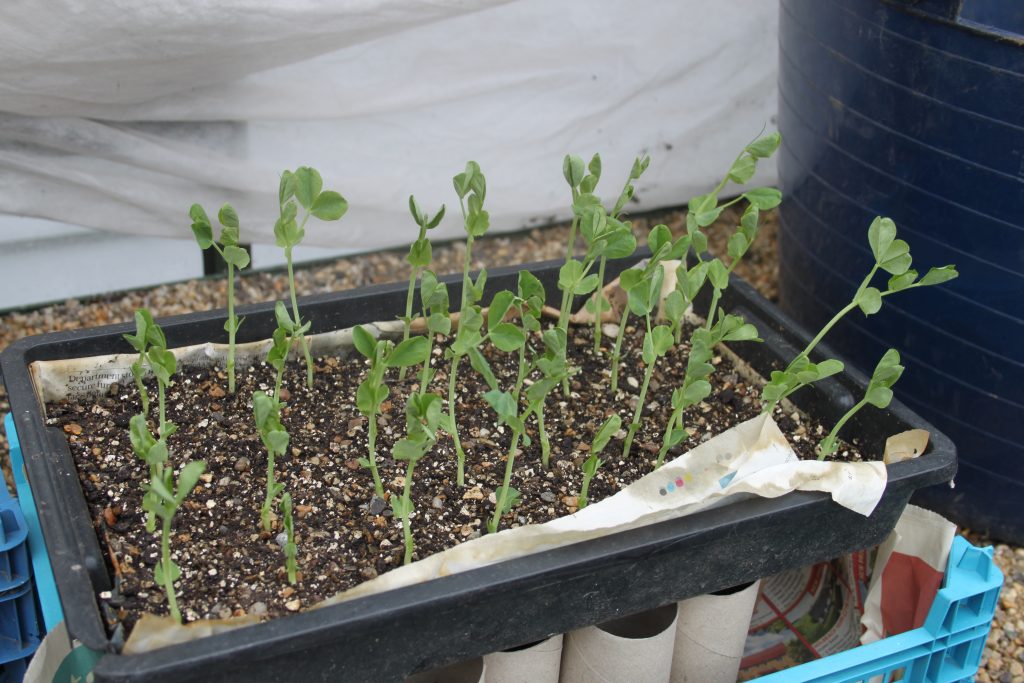
*If you don’t know the work of David Smith then his books are well worth a read. There are copies of them in the ERO Library. If you haven’t seen The Victorian Kitchen Garden then it is available on DVD.

Thank you, Neil, for this exploration of past agricultural practice concerning a vegetable we all love! (Though I was told I kept a mouthful of unswallowed peas in my mouth out of spite for at least a half hour during a family drive when I was four or five.)
Thanks David – great image and do you like peas now? Neil
I seem to remember that on at least one manor somewhere in England custom permitted the women and children to pick small quantities of field peas on certain days for eating green.
Really interesting- thank you! Might see if I can grow some too!